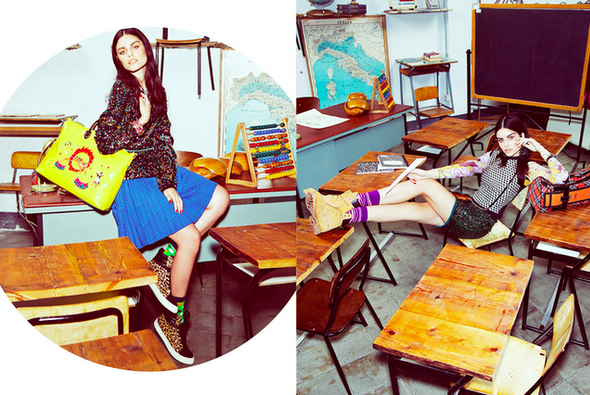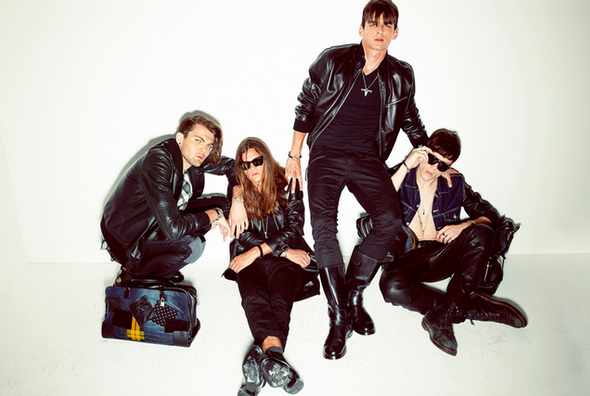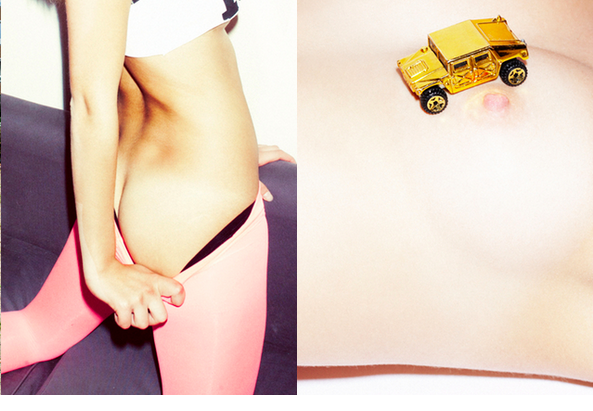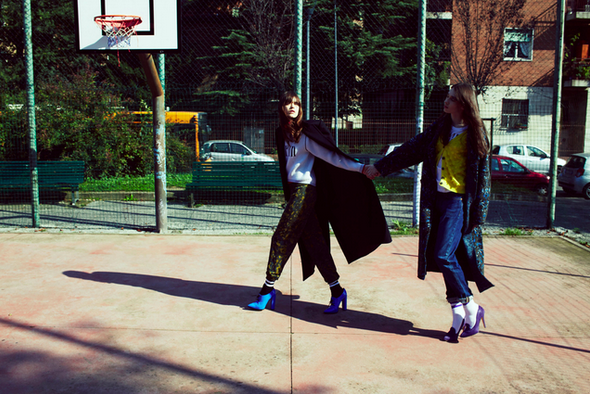Masters of Photography Vol. 13 – Australians is now available and we are already on to the next one. This time, Fashion Industry Broadcast goes global. From Seoul to Berlin, “Masters of Photography Vol. 52 – Next Gen” is a carefully-curated selection of emerging artists who we think might be the next big thing. This art book will feature an amazing selection of their work, as well as thought-provoking interviews.
Every Monday,we will introduce you to one of these new talents. Today, we are flying away to the fashion capital Milan for an exclusive interview with Andrea Olivo.

How would you describe your style?
I’m quite relaxed and tend to shoot from the hip a lot. I like real expressions. I don’t keep a model in the same moment for too long as I find that weakens my image. I guess serendipity best describes how I get my shots, or at least I try to create a situation in which luck can take over.
How and when did you decide to become a professional photographer?
I’ve always taken snapshots but after high school and a sabbatical year in Europe I decided to study photography. That was in 2000 and I haven’t really looked back since.

Where do you find inspiration?
I tend to listen to a lot of Kevin Smith podcasts. His way of seeing the world and the way he got his start in movies has always been a huge inspiration to me. So that’s my background noise but when I need to conceptualise an idea I’ll pull from pop culture, art, music, poetry, books, anything that can sow a seed.
Who are your favourite photographers of all time and why are they so special to you?
There are so many, but Helmut Newton is the first photographer whose name I can remember remembering. I love his attitude to shooting; the way that he never really considered himself an artist. He just shot what he loved.
I love Juergen Teller’s spontaneity, Solve Sundsbo’s technicality and imagination, Araki’s dirty mind and now I’m really looking at works from Harley Weir and Ryan Mcginly. Both are amazing artists who have developed their own visual language and symbolism.

This art book features photographers from the entire world and each of them has a very specific identity. How do you think your geographic location affects your work?
It changes everything in my opinion; not just where you are in a particular moment but also where you grew up.
We are all just a combination of our experiences and dreams so if you grew up in Belfast in the ‘80s it will definitely change the way you shoot in Miami. I grew up in a small town in South Africa and now live in Milan so I find myself looking for glimpses of my childhood even in this big city. Milan itself is quite a hard city to shoot but I really enjoy shooting here and trying to dodge the really typical Italian stereotypes. When I do have to shoot the sights, I’ll make them very present in my image so that they become a caricature.
If you could move to any city in the world, where would you like to live and work as a photographer?
Probably somewhere like Los Angeles where the fashion scene is slowly blossoming and there is beautiful sunshine most of the time.

What are you five dream locations to shoot?
I love cool hotel rooms, no matter if they are dirty and crappy or if they are gorgeous and stupidly luxurious. So more of that would be cool.
Brasilia would probably be a place where I could do cool work. I love those buildings that look like they’re from the cover of a 60’s sci-fi novel. Jamaica, Ian Flemming-style would be cool. I’m a geek and would love to shoot on the moon or Mars one day.
How would you describe the photography industry in your country? What are the chances for a young artist to ‘make it’ and become global?
There are many young very talented photographers coming from Milan at the moment but the general rule is that we need to make a name for ourselves overseas before getting recognition. Luckily there are many ways of doing that.

As a young photographer, you have been part of a big switch in the industry. Indeed, photography today is much more democratised than a few decades ago. Everyone can have access to retouching programs, publishing sites and good cameras. What are your thoughts on the evolution of the industry and the impact it has on your work?
I love what’s happened. I’m not 100% sure that I would have had the cash to burn film to practice in the same way as I did with digital. I have shot with and still play with a lot of films in all formats and I’m a big fan of the medium, but I have a “horses for courses” attitude to how I shoot. Sometimes digital is just a better option. Also, being quite lazy, leaving the house in the rain to drop off or pick up film is sometimes just out of the question!
A lot of young photographers got discovered thanks to their Tumblr or Instagram account. What is your relationship with social media platforms?
I have them all and I dedicate a decent amount of time trying to take care of them. I also love having all those images just at my fingertips to look at when I feel like.

Post manipulation has long been debated, especially in commercial and fashion photography. How much do you retouch your images and what is your opinion on the whole body image debate?
It depends on the job in my case, but for my personal work I tend to retouch very little. I do play with the colours so that most of my work has the same general feel. As for the whole debate, I treat fashion like theatre. It’s not real life so whatever a person wants to do to an image is done solely to define a character. We don’t go to the cinema expecting brutal realism, so we must look at fashion with the same critical gaze. When the discussion turns to news or reportages on the other hand, we hope that what we are seeing is true and hasn’t been manipulated because that would cheapen the profession.







